Classification Systems and taxonomy branches
Plant Kingdom
The broad classification of living organisms was proposed by Whittaker in 1969. He suggested a five-kingdomclassification, consisting of Monera, Protista, Fungi, Animalia, and Plantae. In this chapter, we will furtherstudy the classification within Kingdom Plantae or the plant kingdom. Kingdom Plantae is further classified into algae, Bryophytes, Pteridophytes, Gymnosperms, and Angiosperms.
Classification systems and taxonomy branches
Plant taxonomy can be defined as a branch of botanythat dealswith the characterization, identification, classification, and nomenclature of the plants on the basis ofsimilarities and differences.
The purpose of plant taxonomy is:
1. Identification: To identify the unknown species based on its characteristics and compare it with already existing species.
2. Characterization: To provide a description of all the characteristics of the newly identified plant species.
3. Classification: A suitable placement of the known species into different groups according to similarities and differences.
4. Nomenclature: Providing a suitable scientific name to the convention.
Only a few vegetative features were considered in the first classification system. Along with morphological traits, modern taxonomy studies have become more comprehensive and taken into account numerous morphological, cellular, and molecular factors, such as cellular and reproductive aspects, mode of nutrition, habitat, evolutionary relationships, and so on.
Plant classification systems are divided into three categories.
(I) Artificial system of classification: it was the earliest system that tried to classify organisms based on a few superficial characteristics. Ithowever did not consider morphological details and the evolutionary relationship among the organisms. This system gives equal importance to vegetative and sexual characters. Vegetative characters are greatly influenced by their surroundings. Therefore the closely related species could not be properly classified.More than 2000 years ago, Aristotlewas able to classify plants into herbs, shrubs, and trees, solely on the basis of morphology characters. Carl Linnaeus in his book Systema Naturaegives the hierarchical system of classification for the plant kingdom and animal kingdom. He proposed Binomial Nomenclature and the rules for naming every species.
(II) Natural system of classification: In this system, more traits were taken into account, in order to characterize. It was based on the natural similarities of vegetative and floral characteristics among organisms it considers various external and internal features like the anatomy of the plant, cell types of an embryo, and phytochemistry.
Bentham and Hooker’s system of classification categorized plants into cryptogams (non-flowering plants) and Phanerogams(flowering plants). It helped to determine relationships between the various groups of plants and failed to identify the phylogenetic relationship among different groups as it incorrectly placed gymnosperms between monocotyledons and dicotyledons.
(III) The phylogenetic system of classification: This system is based on evolutionary sequences and genetic links. This system was developed after the publication of Darwin's theory of evolution. Apart from the morphological characteristics found inthe fossil record, genetic components were also taken into consideration.This system of classification is most widely accepted by biologists throughout the world. According to this system, all the organisms occupying the same taxa originated from a common ancestor. Various taxonomists like Englar and Prantl, Hutchinson, Takhtajan, Robert F Thorn, etc. have contributed to the phylogenetic system of classification.
Numerical taxonomy is based on all observable characteristics present in a species. A number of codes are assigned to all the characters and the data is then processed in such a way that each character is given equal importance and at the same time, the hundreds of characters can be considered. It can be easily carried out using a computer.
Cytotaxonomy is based on cytological information like chromosome number cell structure and behavior. Chemotaxonomy exploits the chemical constituents of the plant to resolve confusion related to classification. All these techniques are widely used by taxonomistsnowadays.
Algae
Algae
Algae are a class of creatures that are mostly aquatic, photosynthetic, and nucleus-bearing but lack the real roots, stems, leaves, and specialized multicellular reproductive systems that plants have. They can be found in a range of various environments, including damp stones, soils, and wood. Some of them are also found in the presence of fungi (lichen) and animals (e.g., on sloth bears).
Algae come in a wide range of shapes and sizes, from colony forms like Volvox to filamentous forms like Ulothrixand Spirogyra. Kelps, for example, are a type of marine organism that develops gigantic plant bodies. Algae reproduce vegetatively, asexually, and sexually. Fragmentation is the mode of vegetative reproduction. A thallus forms from each fragment.Asexual reproduction occurs by the formation of spores, the most common of which are zoospores. They are flagellated (motile) and produce new plants upon germination. The fusing of two gametes occurs during sexual reproduction. These gametes can be flagellated and comparable in size (as in Ulothrix) or non-flagellated and similar in size (as in Spirogyra). Isogamous reproduction refers to this type of reproduction. Anisogamous refers to the fusion of two gametes of different sizes, such as those found in Eudorina species. Volvox and Fucus are examples of oogamous fusion that occurs between a big, nonmotile (static) female gamete and a smaller, motile male gamete.
Algae are beneficial to humans in a number of ways. Algae photosynthesis accounts for at least half of the total carbon dioxide fixing on the planet. They enhance the amount of dissolved oxygen in their immediate environment because they are photosynthetic. They are crucial as primary producers of energy-rich chemicals, which are the foundation of all aquatic species' food cycles. Among the 70 species of sea algae used as food are many Porphyra, Laminaria, and Sargassum species. Certain coastal brown and red algae, such as algin (brown algae) and carrageen (red algae), produce huge amounts of hydrocolloids (water-holding compounds) that are commercially exploited.Agar, a commercial product derived from Gelidium and Gracilaria, is used to culture bacteria as well as in ice cream and jelly preparations. Chlorella, a protein-rich unicellular alga, is utilized as a nutritional supplement by astronauts. Chlorophyceae, Phaeophyceae, and Rhodophyceae are the three major groups of algae that are described below.
A. Chlorophyceae: Green algae are members of the Chlorophyceae family. Unicellular, colonial, or filamentous plant bodies are all possible. Because chlorophyll a and b pigments predominate, they are frequently grass green. Pigments are concentrated in specific chloroplasts. In different species, the chloroplasts might be discoid, plate-like, reticulate, cup-shaped, spiral, or ribbon-shaped. In the chloroplasts, most members have one or more storage bodies called pyrenoids. Pyrenoids contain protein besides carbohydrates. Food may be stored in the form of oil droplets by some algae. Green algae have a stiff cell wall made up of an inner cellulose layer and an outside pectose layer.
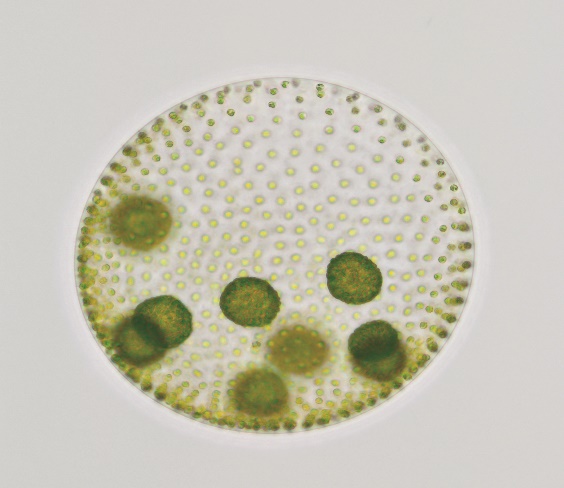
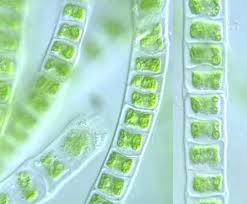
Figure 1
Vegetative reproduction is usually accomplished through fragmentation or the creation of several spore types. Flagellated zoospores produced in zoosporangia are used for asexual reproduction. Sexual reproduction can be isogamous, anisogamous, or oogamous, with significant differences in the kind and development of sex cells. Chlamydomonas, Volvox, Ulothrix, Spirogyra, and Chara are some of the most common green algae.
B. Phaeophyceae: Brown algae, also known as Phaeophyceae, are mostly found in marine environments. They display tremendous variety in size and form. They range in complexity from simple branched filamentous forms (Ectocarpus) to profusely branched forms such as kelps, which can reach 100 meters in height. Chlorophyll a, c, carotenoids, and xanthophylls are all present. Depending on how much of the xanthophyll pigment fucoxanthin is present in them, they range in color from olive green to various colors of brown. Food is stored as laminarin or mannitol, both of which are complex carbs. The vegetative cells have a cellulose wall that is normally covered with a gelatinous layer of algin on the outside. In addition to plastids, the protoplast has a centrally positioned vacuole and nucleus.The plant body has a stalk, the stipe, and a leaf-like photosynthetic organ, the frond, which is normally linked to the substratum by a holdfast. Fragmentation is used in vegetative reproduction. Biflagellate zoospores, which are pear-shaped and have two unequally attached flagella, are used for asexual reproduction in most brown algae. Isogamous, anisogamous, and oogamous sexual reproduction are all possible. Gamete union can occur in water or within the oogonium (oogamous species). The gametes are pyriform (pear-shaped) and have two flagella connected to their sides. Ectocarpus, Dictyota, Laminaria, Sargassum, and Fucus are the most prevalent types.
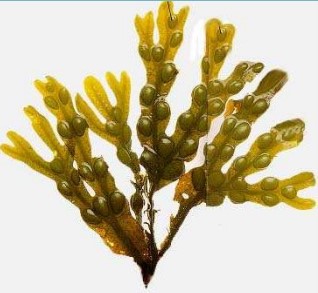
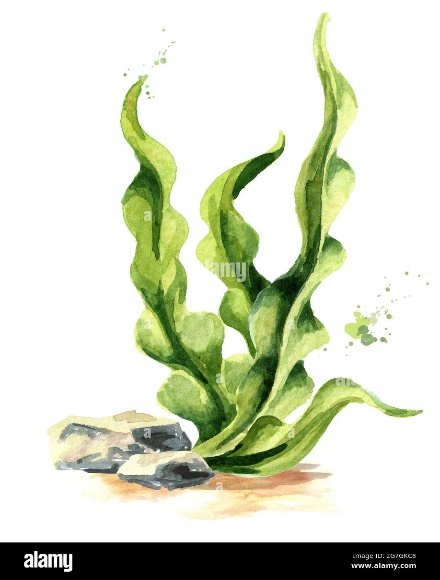
Figure 2
C.Rhodophyceae: Rhodophycea members are frequently referred to as red algae due to the preponderance of the red pigment r-phycoerythrin in their bodies. The majority of red algae are found in the sea, with higher quantities in warmer climates. They can be found in well-lit areas near the surface of the sea as well as at considerable depths in oceans where light is scarce. The majority of red algae have multicellular red thalli. Some of them have a complicated body structure. The food is stored as floridean starch, which has a structure that is extremely similar to amylopectin and glycogen. In most cases, red algae reproduce vegetatively by fragmentation. Non-motile spores and non-motile gametes are used to reproduce asexually and sexually. Sexual reproduction is oogamous, with complicated post-fertilization processes.Polysiphonia, Porphyra, Gracilaria, and Gelidium are the most prevalent members.
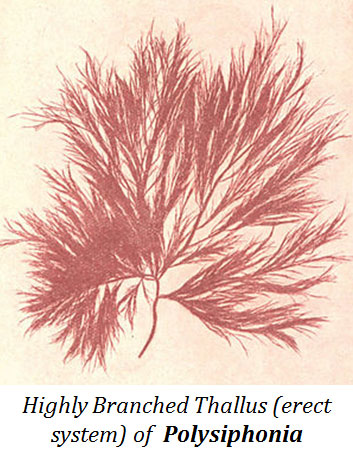
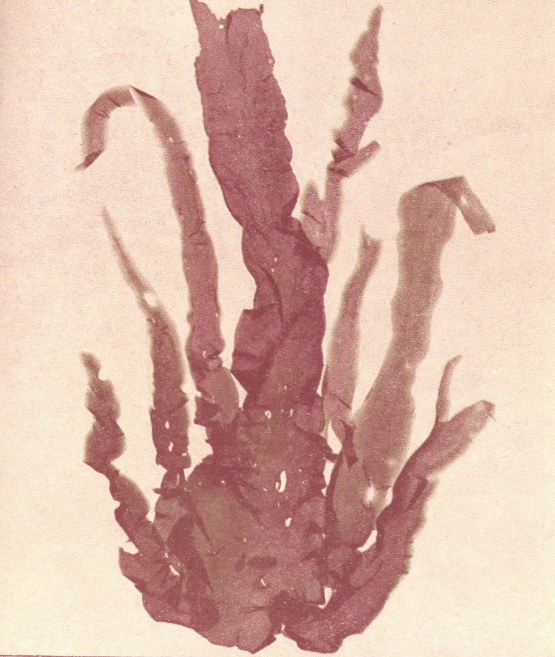
Figure 3
Bryophytes
Bryophytes
Mosses, liverworts, and hornworts are all classified as bryophytes. They are non-vascular plants, meaning they do not have roots or vascular tissue and instead take water and nutrients from the air through their surface. It has a variety of mosses and liverworts that are usually found growing in wet shaded regions in the hills. Bryophytes are also known as amphibians of the plant kingdom since they can live in soil but need water to reproduce sexually. They prefer moist, humid, and shady environments. On bare rocks/soil, they serve a crucial role in plant succession.Bryophytes' plant bodies are more distinct than algae's. It is thallus-like, prostrate or upright, and has unicellular or multicellular rhizoids that connect to the substratum. They are devoid of genuine roots, stems, and leaves. They may have structures that resemble roots, leaves, or stems. The bryophyte's primary plant body is haploid. It is called a gametophyte because it generates gametes. Bryophytes have multicellular sex organs. The male sex organ is referred to as the antheridium. Biflagellate antherozoids are produced by them. Archegonium, the female sex organ, is flask-shaped and produces a single egg. The antherozoids are discharged into the water, where archegonium is present. The zygote is formed when an antherozoid unites with the egg. Zygotes do not go through reduction division immediately.
They generate a sporophyte, which is a multicellular body. The sporophyte is not a free-living organism; it is linked to the photosynthetic gametophyte and feeds on it. To form haploid spores, some sporophyte cells undergo reduction division (meiosis). The gametophyte is produced when these spores germinate.
Bryophytes are not economically important in general, although some mosses supply food for herbivorous mammals, birds, and other creatures. Because of their ability to hold water, Sphagnum moss species have traditionally been utilized as fuel and as packing material for the trans-shipment of living material. Mosses and lichens were the first creatures to inhabit rocks and are hence extremely important ecologically. They break down rocks, allowing higher plants to thrive on the substrate. Mosses decrease the impact of pouring rain and prevent soil erosion by forming dense mats on the soil. Liverworts and mosses are two types of bryophytes.
A. Liverworts: Land plants with no circulatory system are known as liverworts. The liverworts like moist, shaded environments such as stream banks, marshy terrain, damp soil, tree bark, and deep in the forests. The plant body of a liverwort, such as Marchantia, is a thalloid. The thallus is dorsiventral and adheres to the substrate tightly. On the stem-like structures of the leafy members, there are two rows of small leaf-like appendages. In liverworts, asexual reproduction occurs by the fragmentation of thalli or the creation of specialized structures known as gemmae (sing. gemma). Gemmae are asexual, multicellular green buds that grow in little receptacles on the thalli called gemma cups. The gemmae separate from the parent body and germinate, resulting in the formation of new individuals.Male and female sex organs are generated on the same or distinct thalli during sexual reproduction. The sporophyte has three parts: a foot, a seta, and a capsule. Within the capsule, spores are formed after meiosis. These spores become free-living gametophytes when they germinate.
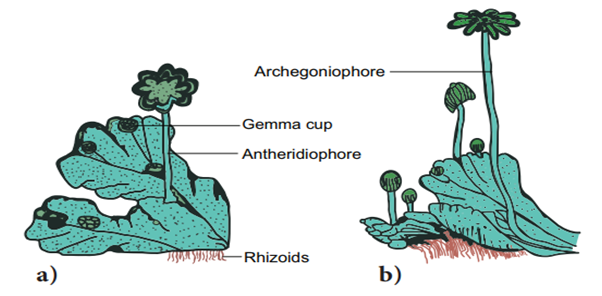
Figure 4: Marchantia (a) Male Thallus. (b) Female Thallus.
B. Mosses: The gametophyte, which has two stages, is the most important stage in a moss' life cycle. The protonema stage, which arises immediately from a spore, is the first stage. It takes the form of a creeping, green, branching, and filamentous stage. The second stage is the leafy stage, which grows as a lateral bud from the secondary protonema. They are made composed of thin, erect axes with spirally arranged leaves. They are linked to the soil by rhizoids, which are multicellular and branching. The sex organs are carried at this stage. Mosses reproduce vegetatively by fragmentation and budding in their secondary protonema. The sex organs antheridia and archegonia are generated at the top of the leafy branches during sexual reproduction.The zygote grows into a sporophyte, which has a foot, seta, and capsule after fertilization. Moss sporophytes are more complex than liverwort sporophytes. There are spores in the capsule. After meiosis, spores are generated. Mosses have a complex system for dispersing their spores. Mosses such as Funaria, Polytrichum, and Sphagnum are common examples.
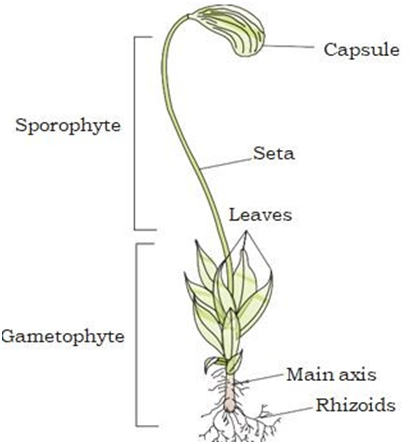
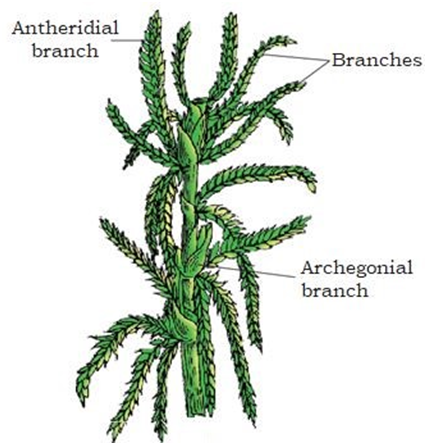
Pteridophytes
Pteridophytes
A pteridophyte is a vascular plant that disperses spores and has xylem and phloem. Pteridophytes are frequently referred to as "cryptogams," meaning that their mechanisms of reproduction are hidden since they do not produce blooms or seeds.Horsetails and ferns are examples of Pteridophytes. Pteridophytes are utilized as soil binders and for therapeutic purposes. They're also commonly used as ornamentals. They are the first terrestrial plants to have vascular tissues – xylem and phloem – according to evolution. Pteridophytes prefer chilly, damp, shady environments, yet some can thrive in sandy soil.
Pteridophytes, have a sporophyte that is divided into real roots, stems, and leaves. The vascular tissues in these organs are well-differentiated. Pteridophyta leaves can be microscopic (microphylls) like Selaginella or huge (macrophylls) like ferns. Sporophytes have sporangia that are cared for by sporophylls, which are leaf-like appendages. Sporophylls can sometimes develop unique compact structures known as strobili or cones (Selaginella, Equisetum).In spore mother cells, the sporangia produce spores by meiosis. The spores germinate to form prothallus, which isa small, multicellular, free-living, primarily photosynthetic thalloid gametophyte. These gametophytes can only thrive in chilly, wet, shaded environments. The proliferation of live pteridophytes is limited and restricted to certain geographical locations due to this specific constrained requirement and the necessity for water for fertilization. Male and female sex organs, known as antheridia and archegonia, are found in gametophytes. The transmission of antherozoids — male gametes released from antheridia – to the mouth of archegonium requires water. The zygote is formed when the male gamete fuses with the egg contained in the archegonium.The zygote then creates a multicellular, well-differentiated sporophyte, which is the pteridophyte's dominant phase. The majority of pteridophytes have homosporous plants, which means that all of their spores are of the same type (e.g. Psilotum, Lycopodium, and Equisetum). Heterosporous genera include Selaginella and Salvinia, which generate two types of spores: macro (big) and micro (small). Megaspores and microspores, respectively, germinate and produce female and male gametophytes. Female gametophytes are kept on the parent sporophytes for varying amounts of time in these plants. The female gametophytes are responsible for the development of the zygotes into newborn embryos. This occurrence is a prelude to the seed habit, which is considered a crucial evolutionary step.
Pteridophytes are divided into four groups: Psilopsida (Psilotum), Lycopsida (Selaginella, Lycopodium), Sphenopsida (Equisetum), and Pteropsida (Dryopteris, Pteris, Adiantum).
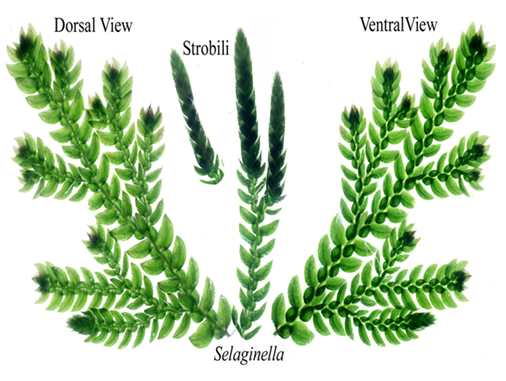
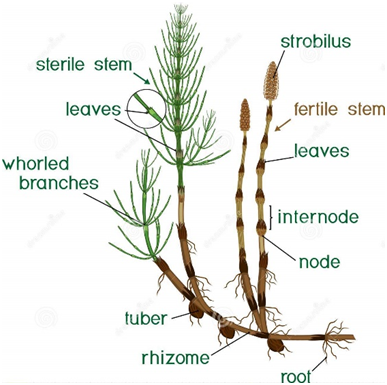
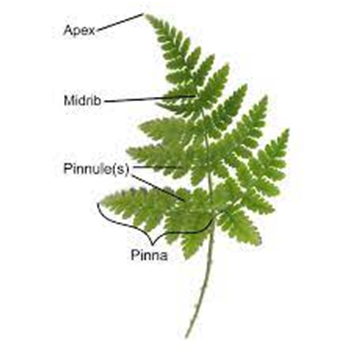
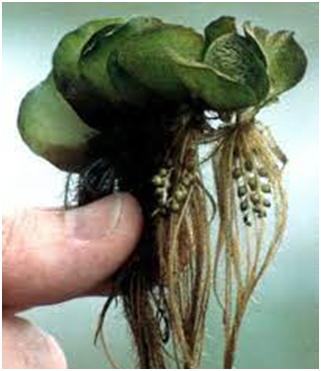
Figure 6
Gymnosperms
Gymnosperm
Any vascular plant that reproduces by means of an exposed seed, or ovule, is referred to as a gymnosperm. Many gymnosperm seeds are carried in cones and are not visible until they reach maturity. Both before and after fertilization, the ovules are not contained by any ovarian wall and remain visible. The seeds that form after fertilization are unprotected, or naked. Gymnosperms are medium- to tall-sized trees and shrubs. The gigantic redwood tree Sequoia, a gymnosperm, is one of the world's tallest tree species. Taproots are the most common type of root. Some genera have mycorrhizal fungi connected with their roots (Pinus), while others have small specialized roots (Cycas) termed coralloid roots that are coupled with Nitrogen-fixing cyanobacteria.Cycas has unbranched stems, whilePinus andCedrushave branched stems. Simple or complicated leaves are possible. The pinnate leaves of Cycas last for a few years. Gymnosperm leaves are well-adapted to tolerate temperature, humidity, and wind extremes. The needle-like leaves of conifers minimize the surface area. Their thick cuticle and recessed stomata also aid in water conservation.
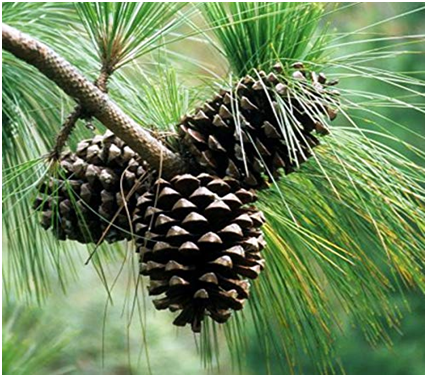
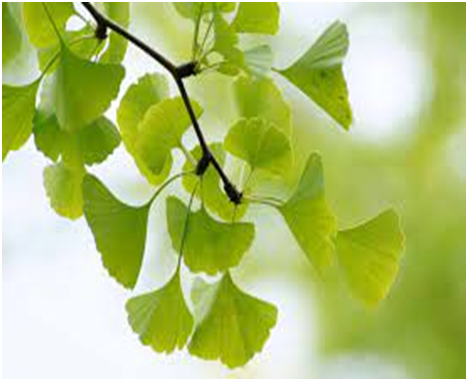
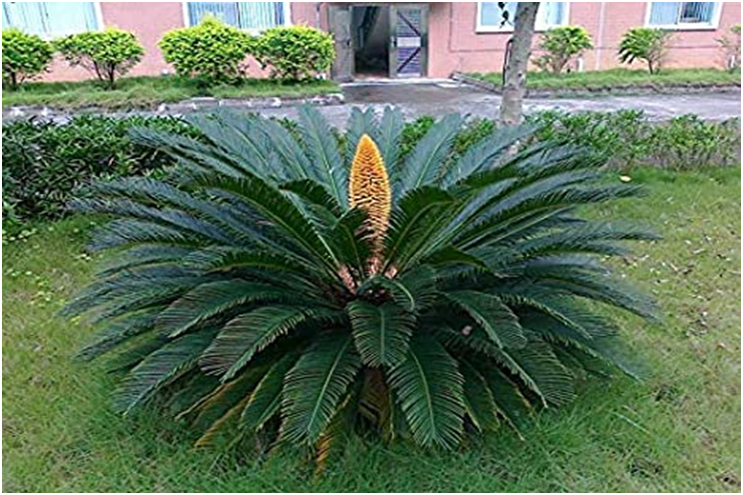
Figure 7
Gymnosperms generate haploid microspores and megaspores and are heterosporous. Both types of spores are formed in sporangia, which are carried on sporophylls that are spirally arranged along an axis to create lax or compact strobili or cones. Microsporangiate or male strobili contain microsporophylls and microsporangia. The microspores mature into a male gametophyte that is extremely small and restricted to a small number of cells. A pollen grain is a gametophyte that has been reduced in size. The microsporangia is where pollen grains grow. Macrosporangiate or female strobili are cones carrying megasporophylls with ovules or megasporangia. On the same tree, male and female cones or strobili can be found (Pinus).
Male cones and megasporophylls, on the other hand, are produced on distinct trees in Cycas. One of the nucellus cells differentiates into the megaspore mother cell. The nucellus is shielded by envelopes, and the resulting structure is known as an ovule. Megasporophylls carry the ovules, which can be grouped to create female cones. The megaspore mother cell splits into four megaspores by meiosis. One of the megaspores within the megasporangium matures into a multicellular female gametophyte with two or more archegonia or female sex organs. Megasporangium also retains the multicellular female gametophyte.
Unlike bryophytes and pteridophytes, male and female gametophytes in gymnosperms do not have their own free-living existence. They stay in the sporangia that are left on the sporophytes. The microsporangium releases the pollen grain. They are carried by the wind and come into touch with the opening of megasporophyll ovules. In the ovules, the pollen tube containing the male gametes develops towards archegonia and discharges its contents near the archegonia's mouth. The zygote develops into an embryo after fertilization, and the ovules mature into seeds. These seeds aren't protected in any way.
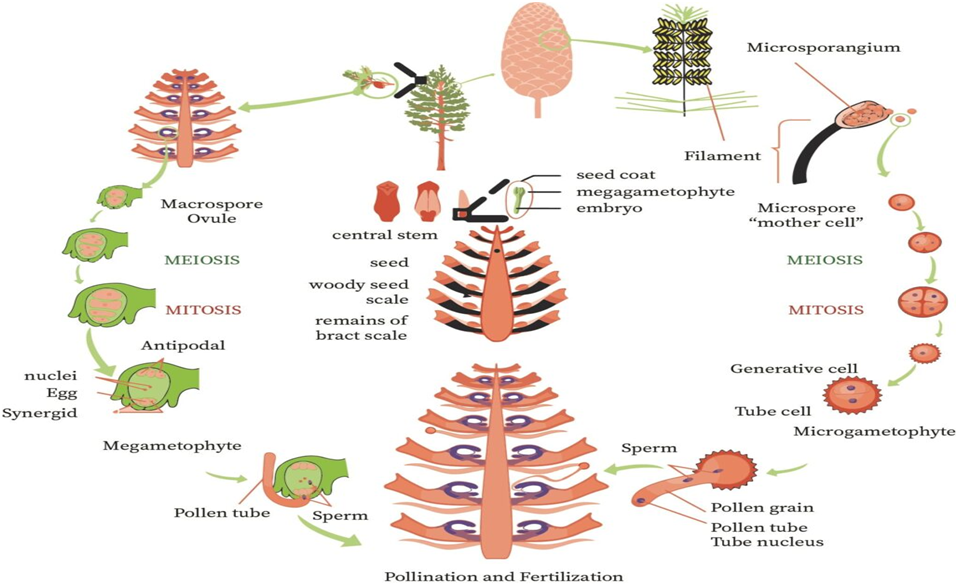
Angiosperms
Angiosperms
Angiosperms (flowering plants) generate pollen grains and ovules in specialized structures known as flowers. The seeds of angiosperms are encased in fruits. The angiosperms are a diverse group of plants that can be found in a variety of environments. They range in size from the tiniest Wolffia to massive Eucalyptus trees (over 100 meters). Food, fodder, fuel, medicines, and a variety of other commercially significant things are all provided by them. There are of two types: monocotyledons and dicotyledons. Seeds with two cotyledons, reticulate venations in leaves, and tetramerous or pentamerous flowers (four or five members in each floral whorl) distinguish dicotyledons.
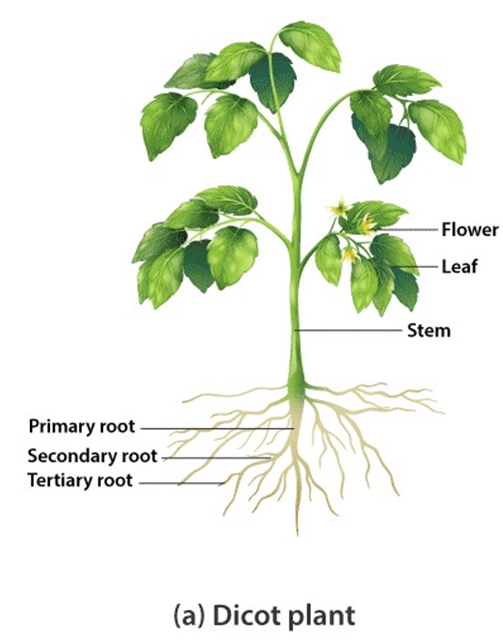
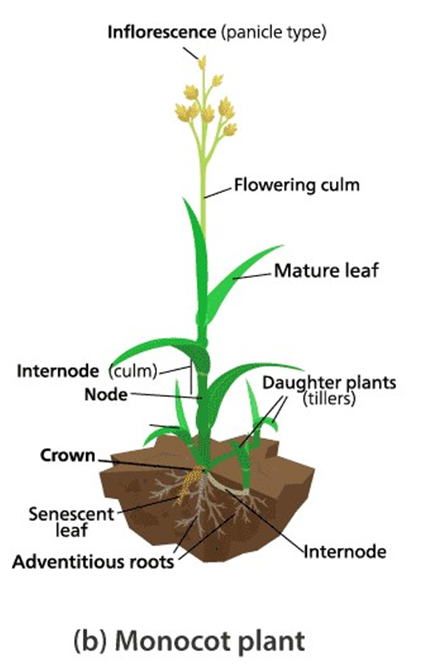
Figure 9: A dicot and monocot plant.
Monocotyledons, on the other hand, have single cotyledonous seeds, leaves with parallel venation, and trimerous flowers with three members in each floral whorl. The stamen is a flower's male sex organ. A short filament with an anther at the tip makes up each stamen. The pollen mother cell divides through meiosis within the anthers to produce microspores, which mature into pollen grains. The pistil is a flower's female sex organ. A large ovary, a long slender style, and the stigma make up the pistil. Ovules can be found inside the ovary. Each ovule has a megaspore mother cell, which goes through meiosis to produce four haploid megaspores. To produce the embryo sac, three of them degenerate and one divides.
A three-celled egg apparatus – one egg cell and two synergids, three antipodal cells, and two polar nuclei – is found in each embryo sac. Eventually, the polar nuclei combine to form a diploid secondary nucleus. Pollen grains are dispersed from the anthers and carried to the stigma of a pistil by wind or other means. Pollination is the word for this process. The pollen grains germinate on the stigma, and the pollen tubes grow through the stigma and style tissues to reach the ovule. Two male gametes are released from the pollen tubes into the embryo sac. Syngamy occurs when one of the male gametes combines with an egg cell to generate a zygote. The triploid primary endosperm nucleus (PEN) is formed when the other male gamete combines with the diploid secondary nucleus.
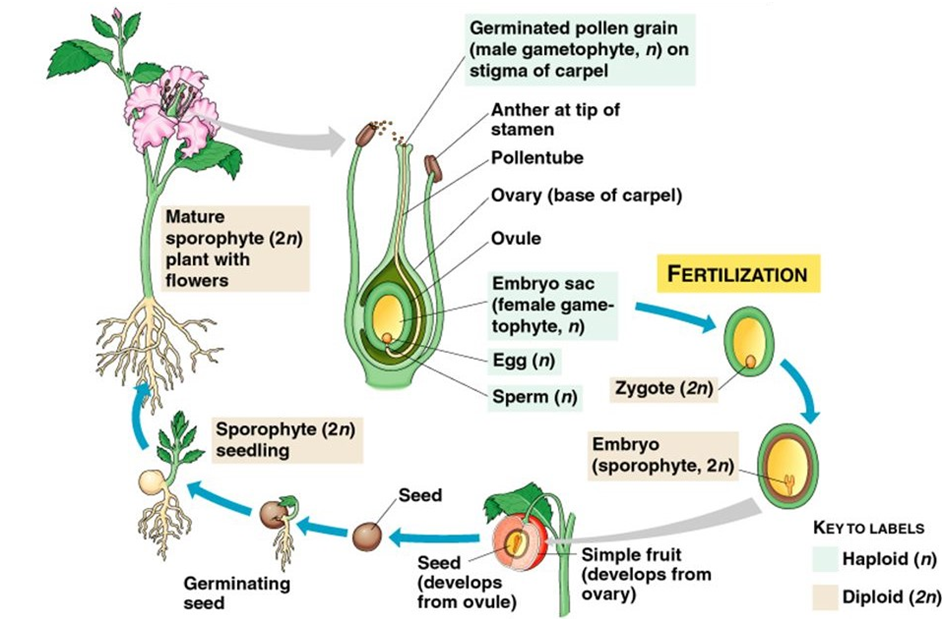
This phenomenon is known as double fertilization because it involves two fusions, syngamy and triple fusion, which is unique to angiosperms. The zygote matures into an embryo (with one or two cotyledons), and the PEN matures into endosperm, which feeds the growing embryo. After fertilization, the synergids and antipodals disintegrate. The ovules become seeds, and the ovaries become fruit, during these activities.
Plant Life Cycles and Alteration of Generations
Plant Life Cycles and Alternation of generations
The alternation of generations, also known as metagenesis or heterogenesis, is the transition between a sexual and asexual phase in an organism's life cycle. Both physically and chromosomally, the two phases, or generations, are often unique.
Mitosis allows haploid and diploid cells in plants to divide. This ability results in the development of haploid and diploid plant bodies. Mitosis creates gametes in the haploid plant body. A gametophyte is represented by this plant body. The zygote divides by mitosis after fertilization to generate a diploid sporophytic plant body. Meiosis produces haploid spores in this plant body. These, in turn, divide by mitosis to produce a haploid plant body.During the life cycle of any sexually reproducing plant, the gamete-producing haploid gametophyte, and the spore-producing diploid sporophyte alternate generations.
Individuals from diverse plant groups differ in the following patterns:
1. The one-celled zygote is the sole representative of a sporophytic generation. Sporophytes do not exist as free-living organisms. The zygote undergoes meiosis, which leads tothe creation of haploid spores. The gametophyte is formed when haploid spores divide mitotically. The free-living gametophyte is the major photosynthetic phase in such plants. The term "haplontic" refers to this type of life cycle. This pattern is found in many algae, including Volvox, Spirogyra, and some Chlamydomonas species.
2. The kind in which the diploid sporophyte is the dominant, photosynthetic, and independent phase of the plant is the other extreme. The single to few-celled haploid gametophyte represents the gametophytic phase. This type of life cycle is known as diplontic.This pattern is shown by the alga Fucus sp. Furthermore, all seed-bearing plants, such as gymnosperms and angiosperms, follow this pattern with some modifications, with the gametophytic phase ranging from single to multicellular.
3. Bryophytes and pteridophytes, for example, have an intermediate state (Haplo-diplontic), in which both phases are multicellular. Their dominating periods, however, are distinct.
A haploid gametophyte represents a dominant, autonomous, photosynthetic, thalloid, or erect phase that alternates with the short-livedmulticellular sporophyte that is entirely or partially dependent on the gametophyte for anchoring and nourishment. This pattern is found in all bryophytes. A dominant, autonomous, photosynthetic, vascular plant body represents the diploid sporophyte. It alternates with a haploid gametophyte that is multicellular, saprophytic/autotrophic, and independent but short-lived. The haplo-diplontic life cycle is a pattern like this.
All pteridophytes exhibit this pattern. Interestingly, while most algal genera are haplontic, some of them such as Ectocarpus, Polysiphonia, and kelps are haplo-diplontic. Fucus, an alga is diplontic.
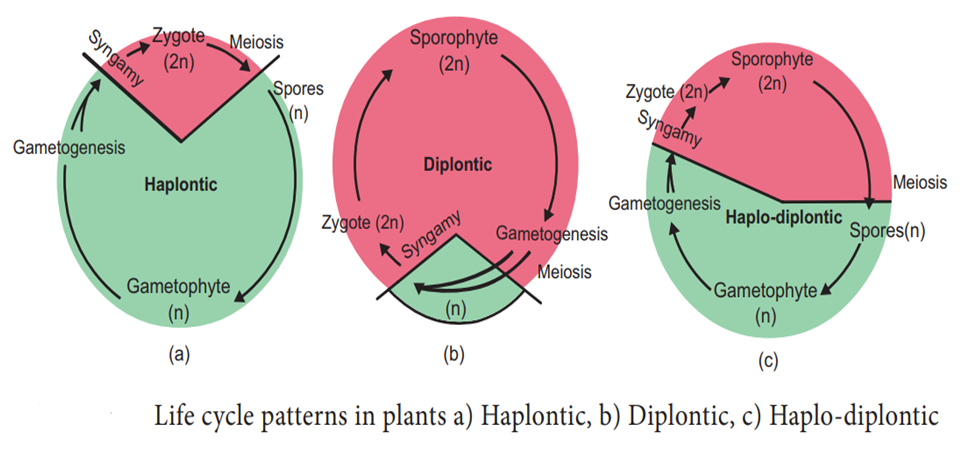

 ACME SMART PUBLICATION
ACME SMART PUBLICATION
